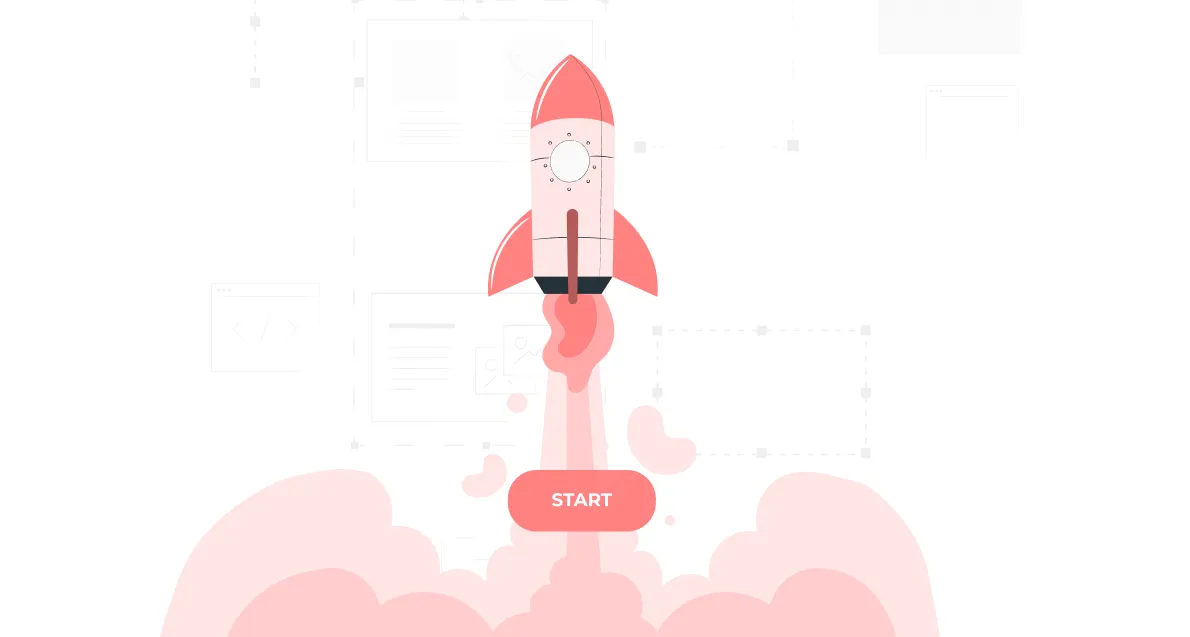Stages of Game Development
Game Development is an enjoyable yet time-consuming journey that demands careful planning, hard work, and creativity. In this article, we'll explore several key stages of computer game development, from the initial idea to release and ongoing support.
Foundational Preparation
Preparation for a project marks the initial and crucial stage where the future of the endeavor is defined for all team members

- Idea Exploration: The development team must brainstorm and document all key ideas, noting references from various sources such as computer or board games, films, and books that will serve as inspiration for the game's creation.
- Goal Setting: Determining the game's genre, target audience, and core gameplay mechanics is vital. Defining project goals and desired outcomes post-completion is essential. Existing materials and insights from other projects can be leveraged, with all data documented for uniformity across the team.
- Conceptualization and Economy Design: Identifying key narrative stages and themes is crucial. Developers create initial prototypes to test their ideas. Establishing an economy within the game, including item costs, in-game earnings, rewards, experience accrual, and more, is pivotal to maintaining player interest.
- Development Planning: Based on the concept and economy, a project estimate is created detailing all key aspects, required time, and specialists. Subsequently, a roadmap and timeline are drafted, outlining major project milestones, feature implementation dates, and release schedules to facilitate team forecasting.
- Tool Selection: Choice of programming languages, game engines (Unity, Unreal Engine, Defold, Godot, GameMaker Studio), graphic design tools (Blender, 3DsMax, MagicaVoxel, ZBrush, Artbreeder), and audio production software (GarageBand, FL Studio, Adobe Audition) depends on the game's concept and technical requirements.
- Resource Acquisition: Once preceding stages are complete, project financing must be secured. Budgets are allocated for each development and marketing phase, ensuring stable project progress. Qualified specialists are recruited based on the allocated budget for game development and marketing efforts.
Thorough preparation minimizes project risks, development time, and financial uncertainties. It's crucial to remember that even the best ideas can fail without proper planning. Careful consideration of all details is necessary, with a willingness to adapt plans as necessary.
Now, let's dive into the key aspects of each stage.
Concept and Economy
Developing a game concept provides an overview of the game's theme, genre, mechanics, graphics, sound, and other defining characteristics. Among these, particular attention should be paid to the gameplay mechanics, as they play a crucial role in attracting player interest and determining the game's target audience.
It's essential to decide during the conceptualization phase which target audience the game is intended for and on which platforms it will be available. These decisions influence the selection of specialists, the release and marketing strategies, and the preparation of analytics to monitor user behavior. The economics of a computer game, much like the economics of any object, is designed to fulfill the needs of its users. The game's economy stands as one of its most critical elements. A well-conceived and balanced game economy can contribute significantly to its success, accounting for approximately 30% of its potential success. Conversely, an inadequately developed economy poses a significant risk of player disengagement and loss of interest in the game.
Game Development Plan
A game development plan is a comprehensive document outlining all major milestones of the project, detailing when each release will occur and what functionalities will be included. It serves as a roadmap for developers, aiding in task prioritization, facilitating compromises in case of time constraints, mitigating financial risks, and ensuring timely project delivery. The game application development plan typically includes:
- main stages of development;
- key objectives for each stage;
- implementation deadlines;
- allocated budget;
- description of the development team;
- risk assessment;
- progress evaluation.
Ideally, all aspects of creating a development plan should be conducted using specialized project management software to automate processes and streamline the workflow for all team members.
Prototyping
Prototyping is the technical process of creating a simplified yet playable version of a game. It allows developers to test core game mechanics, ideas, and concepts early in development, before the development team invests significant resources into creating the full game. This serves as a form of game experimentation that aids in gathering valuable feedback and refining the game before full-scale development commences.

Creating a prototype serves several key objectives:
- Understanding how game mechanics operate in practice and whether they resonate with players.
- Soliciting feedback from players.
- Addressing errors in the early stages of development.
- Saving time and resources during the game development process.
- Boosting motivation within the development team.
Various types of prototypes exist. Typically, digital prototypes are employed throughout the game development process to ensure maximum realism in gameplay.
Programming
Programming is the technical process of writing the code that brings a game to life. This stage of development transforms the ideas and concepts formulated in earlier stages into an interactive experience. Game programming is a complex and multifaceted technical process that demands not only deep knowledge of high-level programming but also an understanding of game mechanics, design, and algorithms. The main tasks of game programming include:
- ensuring that all game mechanics function properly;
- developing the user interface and elements with which the player interacts;
- ensuring optimal game performance across a wide range of devices.
Programming represents a crucial technical stage in game development that necessitates careful planning, hard work, and extensive expertise. To devise a development plan effectively, one must possess technical skills in IT project creation, comprehend the language of programmers, and pay close attention to all their input.
Graphics and Sound
Graphics and Sound are two interconnected and vital elements that play a pivotal role in shaping the atmosphere of a game, immersing players in the virtual world, and enhancing their experience to be as thrilling and memorable as possible.

Football story — Multiplayer game, backyard soccer simulator, 2d pixel art.

MetaFighter — 3D multiplayer fighting game for browsers and mobile devices.
Key tasks in graphics and sound development include:
- establishing the color scheme and design of objects within the game world;
- creating models;
- texture mapping;
- enhancing realism;
- implementing visual effects;
- producing videos for various cutscenes and demonstrating animations that require programmable implementation.
For the technical execution of these tasks, specialized tools are employed, including 3D and 2D editors, animation editors, game engines, as well as music and video editing programs. The creation of graphics and sounds progresses alongside the main development process. Typically, some graphics are prepared even before any code is written.
Testing and Bug Fixing
Testing and Bug Fixing Testing and bug fixing constitute integral aspects of game development, ensuring its quality and delivering an impeccable gaming experience. Testing serves to identify errors within the game that could adversely affect gameplay, performance, stability, and other aspects.

There are several popular types of testing:
- functional testing: checking the functionality of all game features;
- load testing: assessing the program's performance under different player loads;
- performance testing: evaluating the speed of the game;
- compatibility testing: ensuring performance across various devices;
- localization testing: verifying the accuracy of translations;
- the Test-Driven Development (TDD) approach: writing software tests before implementing specific functionalities.
Following testing and error identification, necessary changes are implemented, thus facilitating the creation of a high-quality software product.
Launch and Release
Once all the main stages of game development are completed, the developer initiates the release of the project. This involves publishing the project on the designated platform and making it available to all users of the site or a specific target audience. Following the launch, it is essential to monitor the game's performance, analyze player behavior, and implement any necessary adjustments and improvements to enhance the gameplay quality. The initial launch and release mark only the beginning for the project. Developing the game is not sufficient to bring it to the desired level. It is crucial to tailor the game to its target audience and make it a favorite among players.







